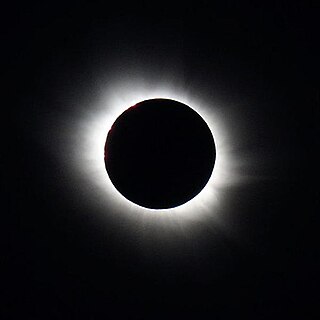
Back كسوف الشمس 20 مارس 2015 Arabic Günəş tutulması (20 mart 2015) Azerbaijani Sunnafinstanis Meaz 2015 BAR Сонечнае зацьменне 20 сакавіка 2015 года Byelorussian Сонечнае зацьменьне 20 сакавіка 2015 году BE-X-OLD Слънчево затъмнение на 20 март 2015 Bulgarian Eclipsi solar del 20 de març de 2015 Catalan Zatmění Slunce 20. března 2015 Czech Sonnenfinsternis vom 20. März 2015 German Ηλιακή έκλειψη της 20ης Μαρτίου 2015 Greek
| Solar eclipse of March 20, 2015 | |
|---|---|
 From Longyearbyen, Svalbard | |
| Type of eclipse | |
| Nature | Total |
| Gamma | 0.9454 |
| Magnitude | 1.0445 |
| Maximum eclipse | |
| Duration | 167 s (2 min 47 s) |
| Coordinates | 64°24′N 6°36′W / 64.4°N 6.6°W |
| Max. width of band | 463 km (288 mi) |
| Times (UTC) | |
| Greatest eclipse | 9:46:47 |
| References | |
| Saros | 120 (61 of 71) |
| Catalog # (SE5000) | 9541 |
A total solar eclipse occurred at the Moon's descending node of orbit on Friday, March 20, 2015,[1] with a magnitude of 1.0445. A solar eclipse occurs when the Moon passes between Earth and the Sun, thereby totally or partly obscuring the image of the Sun for a viewer on Earth. A total solar eclipse occurs when the Moon's apparent diameter is larger than the Sun's, blocking all direct sunlight, turning day into darkness. Totality occurs in a narrow path across Earth's surface, with a partial solar eclipse visible over a surrounding region thousands of kilometres wide. Occurring about 14 hours after perigee (on March 19, 2015, at 19:40 UTC), the Moon's apparent diameter was larger.[2]
Totality was visible in the Faroe Islands and Svalbard. A partial eclipse was visible for parts of Greenland, Europe, North Africa, Central Asia, and western Russia. This total solar eclipse is notable in that the path of totality passed over the North Pole.
The longest duration of totality was 2 minutes and 47 seconds off the coast of the Faroe Islands. It was the last total solar eclipse visible in Europe until the eclipse of August 12, 2026.[3]
- ^ "March 20, 2015 Total Solar Eclipse". timeanddate. Retrieved 12 August 2024.
- ^ "Moon Distances for London, United Kingdom, England". timeanddate. Retrieved 12 August 2024.
- ^ F. Espenak & Xavier Jubier. "NASA - Total Solar Eclipse of 2026 August 12". Retrieved 20 March 2015.
